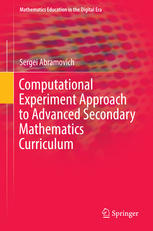

Most ebook files are in PDF format, so you can easily read them using various software such as Foxit Reader or directly on the Google Chrome browser.
Some ebook files are released by publishers in other formats such as .awz, .mobi, .epub, .fb2, etc. You may need to install specific software to read these formats on mobile/PC, such as Calibre.
Please read the tutorial at this link: https://ebookbell.com/faq
We offer FREE conversion to the popular formats you request; however, this may take some time. Therefore, right after payment, please email us, and we will try to provide the service as quickly as possible.
For some exceptional file formats or broken links (if any), please refrain from opening any disputes. Instead, email us first, and we will try to assist within a maximum of 6 hours.
EbookBell Team

4.7
96 reviewsThis book promotes the experimental mathematics approach in the context of secondary mathematics curriculum by exploring mathematical models depending on parameters that were typically considered advanced in the pre-digital education era. This approach, by drawing on the power of computers to perform numerical computations and graphical constructions, stimulates formal learning of mathematics through making sense of a computational experiment. It allows one (in the spirit of Freudenthal) to bridge serious mathematical content and contemporary teaching practice. In other words, the notion of teaching experiment can be extended to include a true mathematical experiment. When used appropriately, the approach creates conditions for collateral learning (in the spirit of Dewey) to occur including the development of skills important for engineering applications of mathematics. In the context of a mathematics teacher education program, the book addresses a call for the preparation of teachers capable of utilizing modern technology tools for the modeling-based teaching of mathematics with a focus on methods conducive to the improvement of the whole STEM education at the secondary level. By the same token, using the book’s pedagogy and its mathematical content in a pre-college classroom can assist teachers in introducing students to the ideas that develop the foundation of engineering profession.